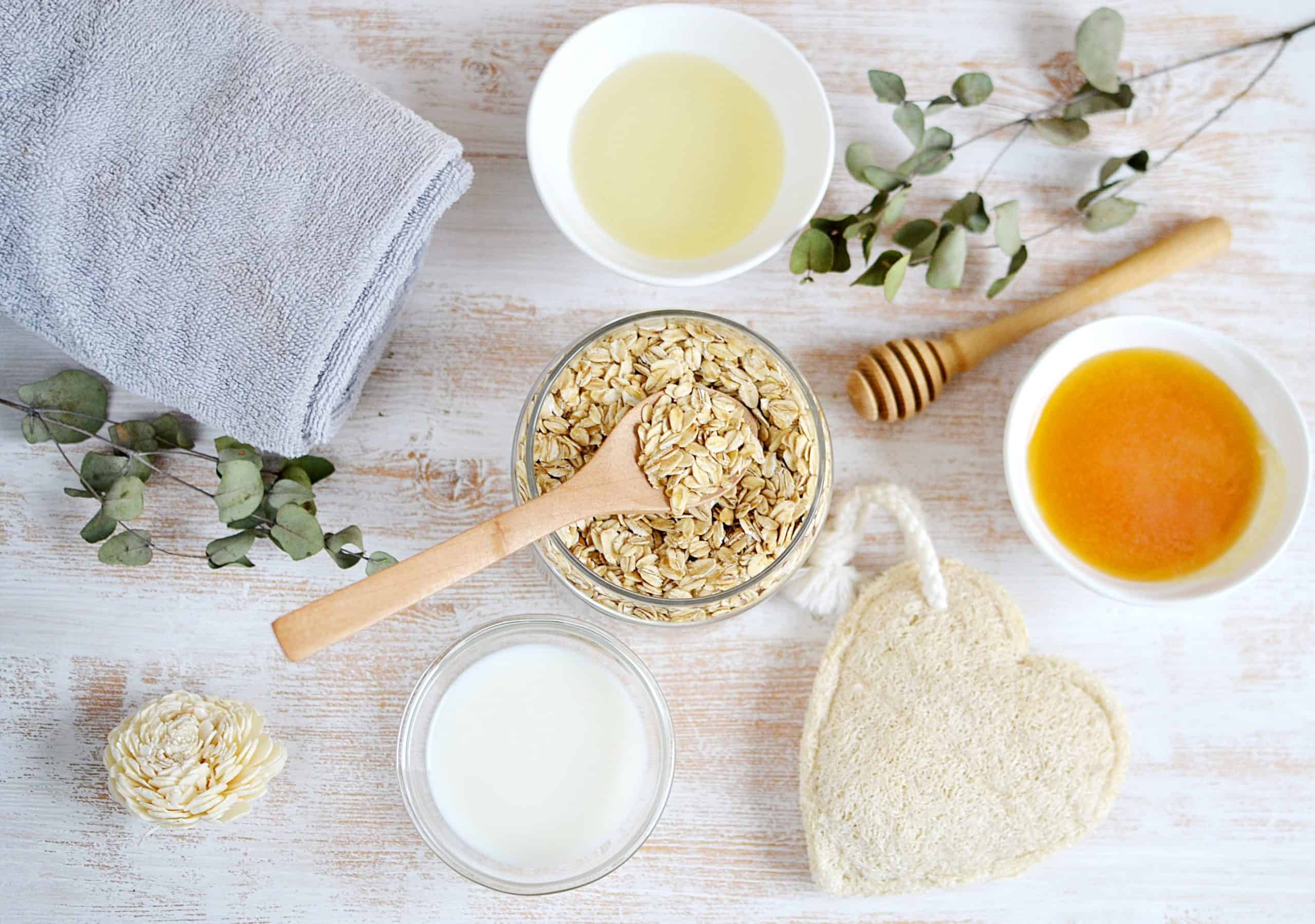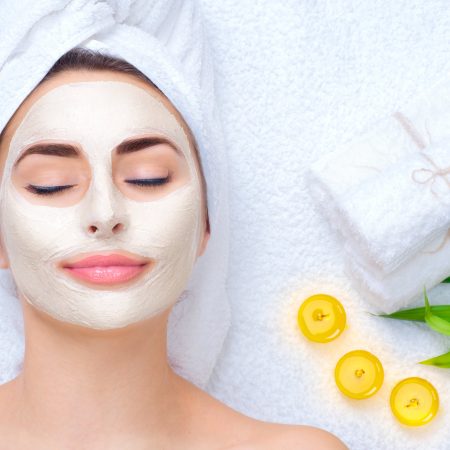Using a face mask is one of the simplest ways to obtain smooth skin. In addition to the wonderful relaxing process that comes with application, when used correctly and consistently, face masks go a long way towards healing and protecting the skin. They can unclog pores, absorb excess oils, and reduce inflammation.
While easy-to-use sheet masks remain some of the most popular to apply, there are a number of different masks types and formulas out there. Each one benefits your skin in different ways and has slightly different application procedures. To help you get the most out of your face mask, we’ve put together a guide on the application process, and collected several tips to help you reach your skincare goals!
Types of Masks
Face masks are available in a variety of textures and formulas. When choosing a mask, you should be taking your skin type and the specific mask ingredients into consideration. This will help you select a mask that works to repair and soften your skin, instead of potentially irritating it.
Clay Masks
Like the name implies, clay masks are formulated with clay or mud. They are usually creamier or thicker in texture, and the specific type of clay base used determines which minerals are in the mask. They are great for oily skin types, and help to fight acne and unclog pores.
Those with sensitive skin can usually use clay makes due to their mostly natural ingredients, but if you are prone to excessively dry skin, you may want to stay away from clay masks as they can dry your skin out further.
Sheet Masks
Sheet masks are made of paper, cotton, nonwoven fibers, or any combination of those materials. They are then soaked in a serum of ingredients that form an occlusive mechanism when applied – this means they close off the skin to air and force the product against the skin, allowing ingredient absorption.
These are a great option for anyone who prefers an easy application. They’re also useful for those of us with dry skin since sheet masks often contain hyaluronic acid which helps to restore moisture.
Peel-Off Masks
This type of mask is often applied as a cream or a gel. Once applied, they work to gently remove the outermost layer of your skin. This helps to relieve dead skin and dullness, and can produce an overall smoother skin texture. Like clay masks, this is a good option for cleaning out pores and fighting acne.
Most peel-off masks are agreeable to all skin types and sensitivities.
Bubble Masks
One of the more adventurous mask types, bubble masks are deep cleansing face masks that work to clean out blackheads, dirt, and oil, while hydrating via a unique oxygenation process. As soon as the ingredients in the mask are applied to your face, they react to any dirt and oil found there and begin bubbling up.
These are a great option if you are struggling with blackheads, but users with sensitive skin might want to approach this mask with caution. Occasionally, the bubbling process can irritate skin and make it itchy.
Overnight Masks
Another mask that can feel like a cream or a gel, overnight masks are a great option for all skin types. Most notably used to boost hydration, they are also perfect for creating firmer skin and fading fine lines. They absorb like a moisturizer and don’t need to be washed off in the morning, giving your skin the extra attention it deserves.
Anyone can use an overnight mask, but they work especially well for mature skin.
Face Mask Application Steps
Each face mask has a slightly different application process. There are also steps you need to take before and after applying the mask to receive the maximum amount of skin benefits possible.
What to Do Before Applying a Face Mask
Prior to applying your chosen mask, you need to cleanse your skin. Make sure you remove all your makeup and wash your face with a gentle cleanser. For added benefits, choose an exfoliating cleanser – it will remove the top layer of dead skin cells so your skin will better receive the mask’s nutrients.
After cleaning, pat your face dry. Try not to rub or scrub it as that can lead to irritation and skin damage.
How to Apply a Face Mask
When applying your mask, you can use a clean paintbrush, makeup brush, or your fingers. Saving a brush specifically for face masks is a good idea if you plan to use masks often.
Clay Mask Application
Take a quarter-size amount of the mask and spread it evenly over your skin. Start around your upper neck and work up, being careful to avoid lips, eyes, and eyebrows.
Sheet Mask Application
Take the mask out of its packaging and gently lay it across your face. Use your brush or fingers to gently fit it to your face shape, making sure it is not too loose or slipping off.
Peel-Off Mask Application
Apply a small amount to your face, working quickly to create a smooth, even coat. As with clay masks, avoid putting it too close to your lips, eyes, and eyebrows.
Bubble Mask Application
Bubble masks are best taken out their containers with a brush or a spoon; sticking your fingers into it can activate the top layer, causing it to start oxidizing. Apply a quarter-sized amount evenly over your face.
Overnight Mask Application
You can apply these as you would a moisturizer. Smooth it evenly over your skin, rubbing it in lightly. Try not to put it too close to your eyes or lips.
Once applied, let the masks sit for the amount of time specified on the packaging, or if using an overnight mask, go to bed and allow the mask to work its magic. If you are using a homemade mask, 30 minutes all the way up to an hour is a fair amount of time.
Try not to leave your mask on longer than specified, as this can lead to dry skin and irritation.
How to Remove a Face Mask
After leaving your mask on for the correct amount of time, you can carefully remove it.
Clay Mask Removal
Splash your skin with lukewarm water and gently rinse until the mask is removed.
Sheet Mask Removal
Simply pull off the mask. You can massage any remaining formula into your skin. You don’t need to rinse after using.
Peel-Off Mask Removal
Slowly and gently peel off the mask, starting at the edges. Do not pull hard or tug at it as you may hurt your skin. There is no rinsing required once you have the mask off.
Bubble Mask Removal
Use lukewarm water to fully rinse this mask from your skin.
Overnight Mask Removal
You don’t need to rinse off or remove this type of mask. Upon waking in the morning, you can follow your usual skincare routine.
When rinsing, you can use your hands or a soft face sponge to help get the mask off. Remember to not scrub at your skin to avoid hurting it.
What to Do After Removing a Face Mask
You may think that mask removal is the last step, but there are a couple of actions you can take afterward that help to seal in your mask’s skin benefits.
Moisturize Your Skin
You should do this while it is still damp. In the case of overnight masks, moisturize upon waking up. Doing this will keep your skin hydrated and maximize the effects of your mask.
Use a Toner
Using a toner is optional, but it can help seal your pores and balance your skin. If you are going to use one, apply it before using moisturizer.
How Often Can You Use Face Masks?
For best results, you should use a face mask 2 to 3 times a week, though using just once a week is fine. If you prefer clay masks, they should only be used once a week to prevent the skin from becoming dry.
It might be tempting, but try not to overuse your masks. Overuse can actually have the opposite effect on skin, making it more prone to irritation and damage. This is because constantly wetting the skin interrupts the skin barrier function. The skin doesn’t have enough time to strengthen and repair itself between uses, leading to your skin becoming dry and sensitive.
The Benefits of Multi-Masking
Multi-masking refers to taking multiple masks and putting them on different areas of your face at the same time. It can be very beneficial if you have a mixed dry or oily skin type, or specific areas you want to target. Consider your exact skin concerns and choose individual masks suited to address them.
When multi-masking, cover the target area with each mask according to our application steps above. If you are using a sheet mask in combination with other types of masks, cut out the area you want to apply and then place it onto your face.
Be sure not to layer your masks on top of each other. You will not be able to properly receive the skin benefits from either mask when they are mixed together like this, and the combination of masks on top of each other may be aggravating to your skin.
Face Mask Concerns
Putting on a face mask should be a relaxing experience. You should not feel any strong itching or burning when using them. If you do feel any kind of irritation or pain, or your skin appears to be becoming inflamed underneath the mask, wash it off immediately. Always be sure to check ingredients and do a patch test before applying masks to avoid the risk of skin irritation or allergic reactions.
In the case of a bubble mask, you may feel tingling, but unless it is excessively painful, you don’t need to remove the mask.
You may also want to avoid overly scented face masks. The fragrances in these are the number one cause of allergic skin reactions. They also often contain alcohols, such as alcohol 40 and denatured alcohol; these are extremely drying to the skin. If you have especially sensitive or dry skin, do your best to select face masks without these ingredients.

DIY Face Masks
DIY face masks are a great way to save money and embrace natural ingredients. Most masks can be made with items you already have around your house, and are completely customizable to your skin type and preferences.
The ingredients you choose dictate the main benefits of your mask. For instance, you can add honey to act as an exfoliator and a cleanser for skin. Citruses and orange juice can be beneficial for skin brightening. If you are after something more hydrating, coconut or olive oil makes a good base. Anyone with oily skin can benefit from eggs mixed into their mask.
If you are interested in homemade masks, there are many recipes out there to help you get started. Keep in mind that DIY masks usually need to be left on longer than a store-bought or premade mask, and that they can all be removed using lukewarm water.
The Key to Healthy Skin
When used correctly, face masks can be the ultimate weapon for fighting a number of troubling skin ailments, including dry skin and acne. They can heal, clean, and hydrate skin – sometimes all at once! Applying a face mask is an easy, relaxing process, and once you get the hang of it, you’ll always be able to enjoy a spa experience right from the comfort of your home.
